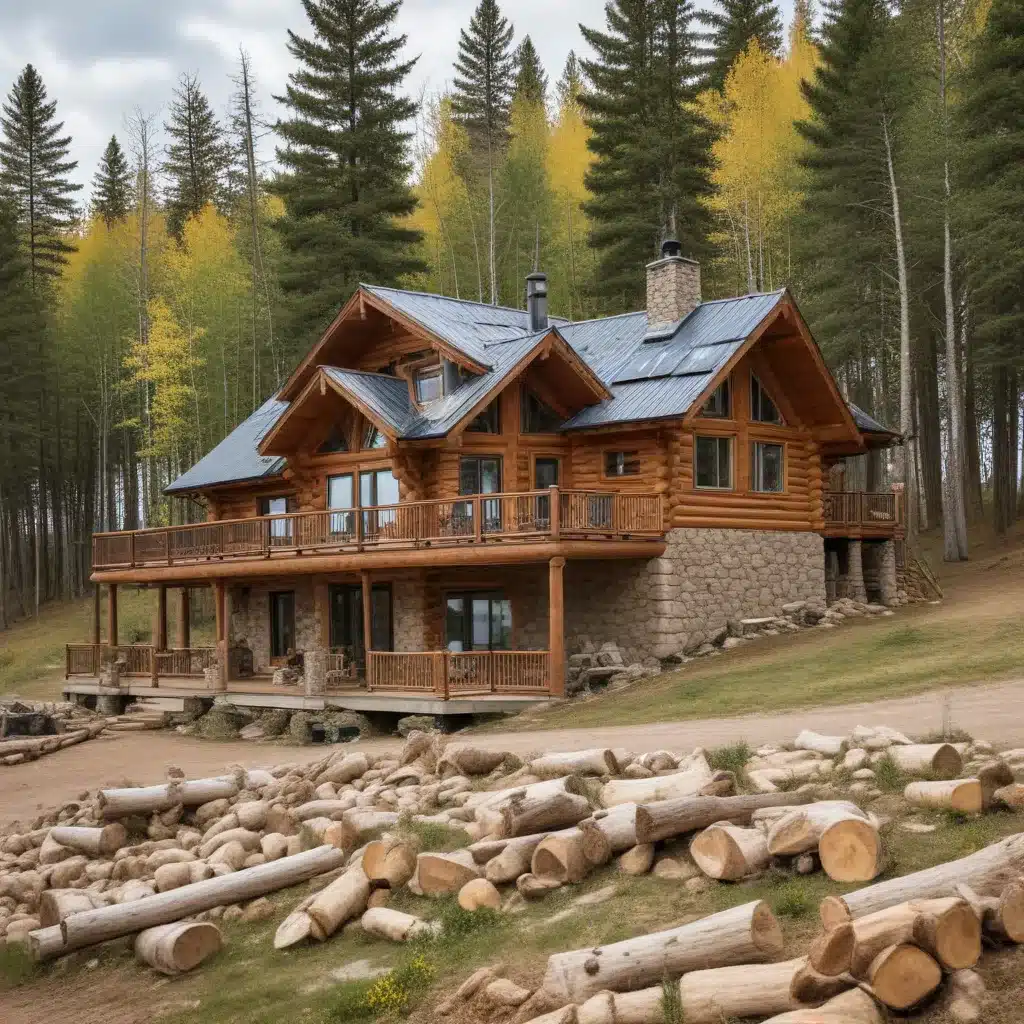
Building Sustainable and Energy-Efficient Log Homes
Crafting a log home is not just about constructing a beautiful and rustic dwelling; it’s about creating a harmonious living space that seamlessly integrates with the natural environment. In the United States, the demand for off-grid log homes has been steadily rising, as homeowners seek to minimize their carbon footprint and embrace a self-sustaining lifestyle. This article delves into the best practices for building energy-efficient log homes, exploring the use of eco-friendly materials, cutting-edge building techniques, and innovative renewable energy solutions.
Sustainable Log Home Construction
When it comes to constructing log homes, the choice of materials is paramount. Homeowners are increasingly opting for locally sourced, sustainably harvested timber to minimize the environmental impact of their build. Properly seasoned and treated logs, combined with advanced insulation techniques, can significantly enhance the energy efficiency of a log home. Innovative building methods, such as timber framing and log wall systems, provide superior thermal performance and airtightness, ensuring the home’s energy needs are minimized.
By prioritizing sustainable materials and construction methods, log home builders can create structures that are not only visually stunning but also environmentally responsible. Additionally, attention to proper home orientation, window placement, and passive solar design can further enhance the energy efficiency of the log home, reducing the need for active heating and cooling systems.
Renewable Energy Solutions for Off-Grid Log Homes
One of the key advantages of living in an off-grid log home is the ability to harness renewable energy sources. Solar photovoltaic (PV) systems have become increasingly affordable and efficient, making them a popular choice for powering log homes in remote or rural areas. Wind turbines can also be integrated into the home’s energy infrastructure, providing a complementary source of renewable electricity.
In addition to solar and wind power, geothermal heat pumps and biomass heating systems can provide efficient and sustainable heating and cooling solutions for off-grid log homes. Geothermal heat pumps leverage the Earth’s natural temperature to regulate the home’s climate, while biomass heating systems can utilize local, renewable fuel sources such as wood pellets or chips.
By integrating these renewable energy technologies into the design of the log home, homeowners can achieve energy self-sufficiency and significantly reduce their reliance on the traditional power grid. This not only lowers their environmental impact but also provides a sense of independence and control over their energy needs.
Maintenance and Longevity of Log Homes
Maintaining the longevity and performance of a log home requires diligent care and attention. Proper log maintenance, including regular inspections, staining, and sealing, is essential to preserving the structural integrity and appearance of the home. Additionally, efficient insulation and ventilation systems help to maintain the indoor climate, further enhancing the home’s energy efficiency and reducing the need for active heating and cooling.
As technology advances, homeowners can also explore opportunities to upgrade and retrofit their log homes with newer, more efficient features, such as advanced insulation materials, high-performance windows, and updated renewable energy systems. By staying attuned to the evolving landscape of sustainable building practices, log home owners can ensure their homes remain energy-efficient and environmentally responsible for years to come.
The Cost of Building an Energy-Efficient Log Home
The cost of constructing an energy-efficient log home can vary significantly depending on factors such as location, size, design, and the specific materials and technologies employed. On average, a custom-built log home in the United States can range from $150 to $300 per square foot, with additional costs for renewable energy systems and advanced insulation.
It’s important to note that the upfront costs of building an energy-efficient log home may be higher than a traditional construction, but the long-term savings on energy bills and the environmental benefits can make the investment worthwhile. By carefully planning the design, materials, and renewable energy systems, homeowners can strike a balance between their budget and their sustainability goals.
Conclusion
Constructing an energy-efficient log home in the United States is a rewarding endeavor that allows homeowners to embrace a self-sustaining lifestyle while minimizing their environmental footprint. By leveraging sustainable building materials, innovative construction techniques, and renewable energy solutions, log home builders can create structures that are not only visually stunning but also highly efficient and environmentally responsible.
As the demand for off-grid living continues to grow, the incorporation of these best practices in log home construction will play a crucial role in shaping a more sustainable future. By harnessing the power of renewable energy and prioritizing energy efficiency, log home owners can enjoy the comfort and beauty of their homes while contributing to the broader movement towards a greener and more self-sufficient way of living.
For those interested in exploring the possibilities of building an energy-efficient log home, we invite you to visit Jorgensen Log Homes, a trusted provider of custom log home solutions in the United States. Their team of experts can guide you through the process, from design to construction, ensuring your dream of a sustainable and energy-efficient log home becomes a reality.


